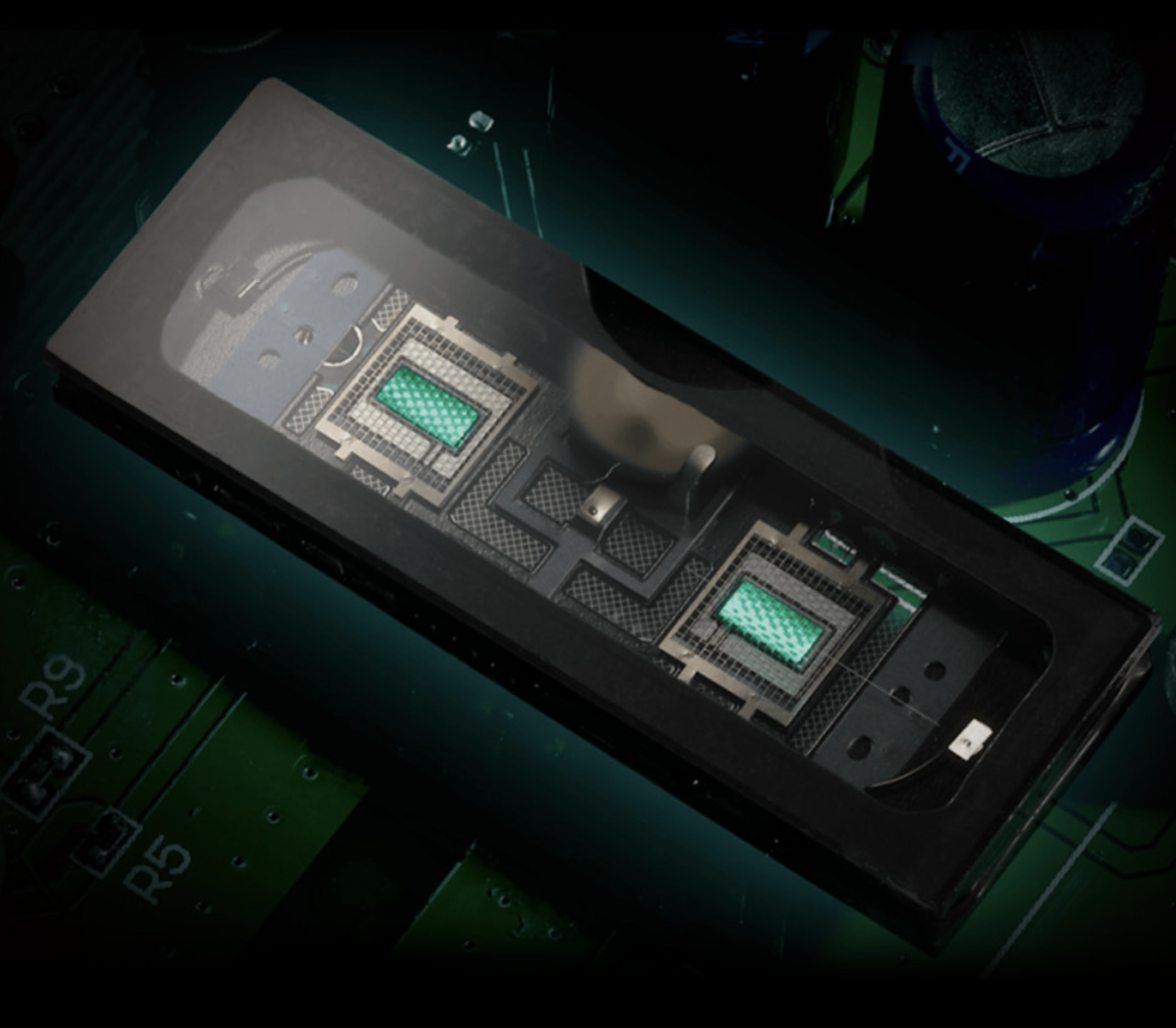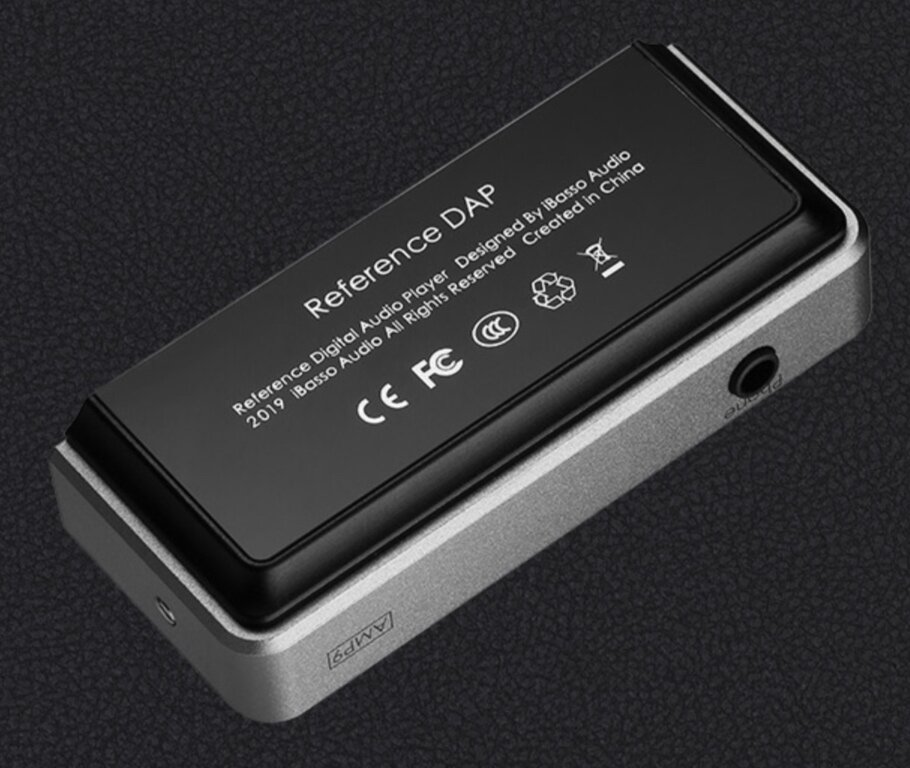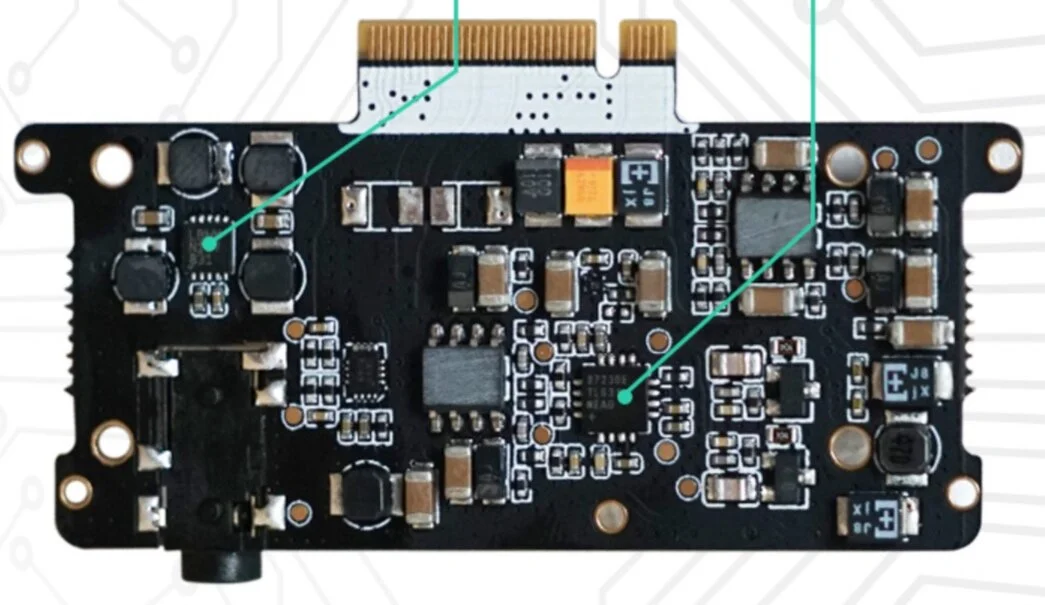IBASSO AMP9 MODULE REVIEW
Analog-Like Musicality and Wondrous Transparency!
The Good: Sublimely musical, transparent, and incredibly engaging sound with a broad soundstage and good layering and positioning. A tube lover’s dream DAP/amp module combination.
The Bad: Overall play time seems to be compromised, depending on associated headgear. Bass does not readily extend to sub bass depths with all headphone pairings.
Our early research had led us to believe that the iBASSO DX220 with AMP9 module would fall nicely into our “Wheelhouse” of sound—analog-like musicality, wonderful transparency, and highly engaging. On this DAP our research results proved quite unanimous. We, therefore, sought out the iBASSO AMP9 modules, so as to ally it to the DX220 for a full review.
Our unexpectedly good review of the iBASSO DX220 as allied to its AMP1 Mk II stablemate, very much surprised us all, as its existing reviews were wide ranging and in some cases even contradictory. We were quite wary as to whether it was our “cup of tea,” so to speak. In the end, the iBASSO DX220/AMP1 Mk II proved to be an exceptional product, that landed, quite nicely in the sweet spot of our “Wheelhouse” of sound.
Would we be surprised by the alignment of the AMP9 module to the DX220? In short, no, the information ferreted out from the manufacturer’s marketing statements to customer, amateur and professional reviewers and videos spoke with a fairly united voice. Over the following weeks, months, we began our own listening/analysis of the iBASSO AMP9 module toward review.
REFRAIN: Unlike most reviews, this review will be non-sequential, as it will start with how the equipment actually sounds and not the process of physically “undressing” it and/or laying out its various accoutrement, specifications, etc. Think of this review then, as a non-linear movie—Memento, Kill Bill, Pulp Fiction, Terminator, The Eternal Sunshine of the Spotless Mind, etc—that, likewise, starts at the end and winds its way to the beginning.
The Sound
As mentioned in the review of the DX220 with AMP1 Mk II there are a number of amplifier modules—AMP3, AMP5, AMP7, AMP8, AMP9—that speaks with their own voice and come with their own abilities—single-ended, balanced, and/or line out inputs, power ratings, and playback time. The AMP9, in this respect, is, perhaps, one of the most unique.
The iBASSO AMP9 module is unique in that it utilizes “high current vacuum tubes” for power generation. The tube in question is the sixth generation, Korg and Noritake Nutube vacuum tube, which clearly reflects the “old is new again” adage. And, in this respect, the AMP9 module brings an analog sound signature as opposed to an analog-like sound signature. But how does it sound, actually?
My current go to for vocals, as of late, is Joan Shelly’ Wild Indifference (Joan Shelly, No Quarter) for both how it sounds and how it is staged relative to the headgear in question. The sound via the AMP9 module aligned to the DX220 is truly sublime and reminiscent of, perhaps, an EL34 tube for the AMP9’s way with vocals and its enveloping richness, and the sweetness of it treble. Shelly’s voice on this track is immediate, it is natural, smooth, and rich. It is also free of edges and harshness and sibilance. Via the symbiosis of Rosson Audio’s RAD-0 and the DX220/AMP9, tone and timbre and texture are themselves naturally rendered, dimensional, and quite rich. Further, the AMP9 appears to bring greater transparency across the midrange, while stage width, layering, separation, and position are very good and in line with a good SET (Single-Ended Triode) amplifier. Truly, how can this be in a pocket-sized, Digital Audio Processor (DAP), untethered to wall sockets or speakers or all manner of cabling? Suffice to say, that it is. More on that below.
The DX220/AMP9’s volumetric cube—its soundstage—width, depth, height layering, positioning, and separation—is wider still than its AMP1 Mk II sibling and quite impressive! The DX220 AMP9 provides for the selfsame black-quiet background as the AMP1 Mk II with an increased musicality that leaps from the various media and captivatingly so. And while the AMP9 via the DX220 can, indeed, render grandeur, its expertise lies in the intimate, the holographic, the small venue—jazz, chamber, folk, soul, etc. And yes, you will table dance to the music when said music calls for such.
The IBASSO DX220/AMP9 for the purposes of this review was paired with the Rosson Audio RAD-0 ($2,600), the Meze Empyrean ($2,999), and Obravo EAMT-2C ($3,000) all of which were powered well, though some better than others (see “Compatibility”) and all quite beautifully. The same tracks as employed with the AMP1 Mk II were used across this review for direct comparative purposes.
Bass
Some pairings are, of course, more potent than others and this is synergy, which can take into account those things we know—power, sensitivity, synergy, etc.—and those we do not—clean lines of power, clean wireless channels, bandwidth limitations, strong force, weak force, dark matter, etc. The bass of the IBASSO DX220/AMP9 allied to the RAD-0 is taunt, impactful, quite distinct, and well extended. One would think this something other than “tubed-bass” given its power and articulation. The AMP9 is certainly more selective of its musical companions, than its AMP1 Mk II sibling and, perhaps, this is a matter of delivered power. A track used with the AMP1 Mk II Eiji Oue’s The Sacrifice: Ritual of the Ancestors (Stravinsky, Reference Recording) broods, then rages via a veritable sea of tympani. The AMP9 and RAD-0 together conduct a beautiful rendering of the explosive power of this track, that never obscures or booms or that sounds congested or slow. Rather, it is taunt, articulate, and impactful. While the AMP9 does not carry this trait across all pairings like its AMP1 Mk II sibling, it certainly does so with the Rosson Audio RAD-0.
Midrange
Gloriously rich, smooth, natural, engaging, and bereft on any nasties—sibilance, harshness, grain—this then is the wonder of tubes well implemented. In Joan Shelly’s song We’d Be Home (Joan Shelly, No Quarter) there is an organic warmth and “thereness”—a palpability and immediacy—that is captivating. And there is this texture in Joan’s voice, via this combination, that beautiful conveys emotion. And yes, the capture of the tambourine in the middle of the room at the one minute and forty-five second point on Wild Indifference (Joan Shelly, No Quarter) is very well resolved and well into the room. Try this with your own gear, if you’ve not already (based on our earlier reviews). The midrange is without doubt a very magical component of the AMP9’s voicing and goes a long way to establishing it as an incredibly musical component of the analog variety.
Treble+
As mentioned in the review of the iBASSO DX220 AMP1 Mk II pairing, “Patricia Barber’s Invitation (Night Club, Blue Note/Premonition Records) is infused by the drum playing of Adam Nussbaum. Drumsticks or brushes tapping/brushing high-hats, crash cymbals, and or ride cymbals are everywhere across the track…” Well, suffice to say, that the AMP9’s highs are more natural and richer in the way of the best analog and yet beautifully resolved and extended and smooth. Again, no indecipherable or unnatural or “Cccshhhhhschhhhh” sounds relative to brushes over high hats, etc. The treble of the pairing AMP9 and RAD-0 is well extended, wonderfully resolved, yet very sweet, and abounding with air in that very three-dimensional sense.
The Wrappings and Accessories
The design of the AMP9’s box is itself quite simple, clean, and straightforward. Consider it a small, black gift box with a white paper band securing its contents. Inside can be found:
AMP9 module
Instructions
A warranty card
A small screwdriver
The design like that of the iBASSO DX220’s is elegant, clean, and professionally executed.
Design—Look and Feel
The AMP9 module is an exacting compliment to its DX220 host, in that it is “smooth, clean, rectangular with bevelled edges.” And as a modular device it easily takes the place of the AMP1 Mk II module, which comes as standard faire with the DX220.
Functionality/Features
When functioning, the AMP9’s two translucent portals display its internal sixth generation Korg and Noritake Nutube vacuum tubes, via a subtle green glow, generally noticed under low-light conditions.
The AMP9 module represents an “Advanced Circuit Design” necessary for the implementation of its Nutube vacuum tubes. As iBASS0 notes:
“The Nutube is powered by a dedicated high-performance DC-DC chip provided by Linear Technology. The chip contains two DC-DC circuits, one is 1 volt for the cathode, and one for the ultra high voltage for the tube anode.”
“Signal grounding and shield grounding are separated to prevent noise interference.
“Added appropriate negative feedback to the amplifier circuit effectively reduces distortion and extends the frequency bandwidth.”
“A dedicated volume control has also been added, which lowers the noise floor for low volume.”
The AMP9 utilizes in its manufacture a host of high precision internal parts—Susumu metal film resistors, custom gold-plated inductors, ROHM polymer tantalum capacitors, Panasonic polymer tantalum capacitors, and a custom silicon shock absorber. As iBASSO notes, the various parts were necessary to:
“Reduce power supply resistance and improve dynamic performance and resolution…and the microphonic effect”
The AMP9 card comes with one output—a 3.5mm single-ended headphone output (please find their specification below). The AMP9 card also comes with three (3) gain stages—Low, Middle, High. The “Low” gain stage, perhaps, implemented to deal with the very high sensitivity IEMs and the elimination of hiss typically associated with them. This has the added benefit of a lower noise floor and thus a dead-quiet background.
The Specifications
3.5mm Headphone Out :
Output Level : 3.1Vrms
Frequency Response : 10Hz~45kHz +/-0.3dB
S/N : 123dB
THD+N : 0.00031% (no Load, 1.8Vrms), 0.00035% (32Ω Load, 1.8Vrms)
Crosstalk : -117dB
Line Out :
Output Level : 3.0Vrms
Frequency Response : 10Hz~45kHz +/- 0.3dB
S/N : 122dB
THD+N : 0.00035% (no Load, 1.8Vrms)
Crosstalk : -116dB
Average Play Time: 8 hours.
(The play time varies with different resolutions and headphone/IEM loads.)
Compatibility (Synergy)
The iBASSO DX220/AMP9 was played in “High Gain” mode, with Digital Filter 2—“Slow Roll-Off, Linear”—selected for playback, connected to the 3.5mm single-ended output in each of the pairings below.
iBASSO DX220/AMP9 with ROSSON AUDIO RAD-0
This is, perhaps, one of the most beautiful pairings with the AMP9, as it provides for top and bottom extension, engaging musicality, and sublime transparency. There is an astonishing richness, sweetness, and palpability true to analog that its AMP1 Mk II sibling cannot match. Voices, male and female, are three-dimensional, the highs are sweetly extended, and the bass is taunt, well articulated, and extended.
iBASSO DX220/AMP9 with oBRAVO EAMT-2C
Despite the fact that the oBravo EAMT-2C and the RAD-0 represent two entirely different implementation of headgear design, they are, nonetheless, more similar in terms of the sonic envelope than one would imagine. Perhaps as mentioned in the EAMT-2C review, the implementation of the AMT tweeter is one source of the magic, that is embodied in this IEM. That said, the EAMT-2C also brings great extension to both bass and treble, possesses a glorious analog musicality from top to bottom, and delivers exceptional transparency. This combination is quite the highly addictive pairing and the moments of “wonder-shock,” in regard prodigious bass, midrange beauty, and treble extension will treble—triple—as one listens to music.
iBASSO DX220/AMP9 with MEZE EMPYREAN
This pairing does, indeed, rival the enveloping richness of the iFi Pro iDSD in ‘Tube+’ mode, with the GTO filter engaged, with DSD1024 upsampling. The AMP9 is, after all, a tubed component and not a simulacrum in solid state dress. As such voices now also parallel in their sublime, textured richness and transparency as was true with the iFi Pro iDSD. This is where the Meze Empyreans excel and, currently, there is no analog to their performance. The bass while quite good does not bring the slam and punch and rumble with the AMP9 that was brought to bear when the Empyreans were allied to the AMP1 Mk II. However, highs via this combination are sweetly extended, detailed, and rather lush. Music lovers will find this combination incredibly intoxicating.
Conclusion
The experience with the iBASSO DX220/AMP9 brought back a rush of memories associated with various tubed amplifiers—EL34s, 6550s, 572s, 845s, 300Bs, etc.—that I have owned over the years and the sublime musical experiences which they delivered. Here we are in the 21st century with tubes OTG and if allied to exceptional IEMs or transportable headphones, then one has a decidedly good tube-based system for enjoyment on land, sea, or air(plane).
The AMP9 is musical and transparent and engaging and evocative of the golden age of music as related to tubed gear and record players which are even now on the rise. That technology has come full circle to embrace tubes in 21st century products is testament to their musical efficacy. And the AMP9 as allied to the iBASSO DX220 is a potent reminder of that golden age.
However, in order for the AMP9 to scale to the sub bass depths and to the sparkling treble heights it will need a partner that is itself up to the task. Matching will be very important in this respect, but know that the potential to scale lies within and decidedly so. Like its sibling the AMP1 Mk II, the AMP9 stages beautifully, issues a black-quiet background, but where it goes beyond its sibling is in conjuring the illusion of intimacy, a holographic analog rendering, as opposed to an analog-like rendering.
As the overall design of the iBASSO DX220/AMP9 is the selfsame as the iBASSO DX220/AMP1 Mk II, it too, of course, fits nicely in the hand, is easy to pocket for OTG listening, is of a beautiful industrial design, is modular, and priced very competitively. It too will best players far above its price point. Finally, the AMP9’s tubed-nature will make it rather difficult to put it and an optimized IEM/headphone away. We highly recommended the iBASSO DX220 with AMP9. And we give it our HIGH-NINES award.
MUSIC—Qobuz, TIDAL EXCLUSIVELY
Alexander Tharaud—Tharaud Plays Rachmaninoff
Omar Sosa—Ballads, Calma
Patricia Barber—Verse
Rickie Lee Jones—Pop Pop
Sade—Lovers Live
Sheku Kannah Mason—Inspiration
Tracey Chapman—Where You Live
Olafur Arnalds—Island Songs
Olafur Arnalds—The Chopin Project
Melody Gardot—My One and Only Thrill
Melody Gardot—My Worrisome Heart
Eiji Oue—Rachmaninoff: Symphonic Dances
Hilary Hahn—Tchaikovsky
Mechell Ndegeocello—Bitter
Jordi Savall—Tous les Matins du MondeMaxwell—Maxwell’s Urban Hang Suite
Sarah Jarosh—Undercurrent
Igor Stravinsky—Stravinsky: Le sacre du printemps (The Rite of Spring)
Annie-Sophie Mutter—Mendelssohn, Brahms: Violin Concertos
London Grammar—If You Wait
Stevie Wonder—Innervisions
Miles Davis—Kind of Blue
Jóhann Jóhannsson—Orphée
Alexis Ffrench—Evolution
Dave Holland—Emerald Tears
Kremer, Trifonov, Dirvanauskaite—Preghiera/Rachmaninov Piano Trios
Joan Shelly—Joan Shelly
Magdalena Kožená—French Arias
Andy Bey—American Song
Erykah Badu—Baduism
Kronos Quartet—Kronos Caravan
Massive Attack—Mezzanine
ANCILLARY EQUIPMENT
Cayin N6ii/A01
Cayin N6ii/E01
Rosson Audio Design-RAD-0
iBASSO DX220-AMP1/MK II
iFi Pro iDSD
Meze Empyrean
OBravo EAMT-2C IEMs
Final Sonorous III
FiiO FH5
AudioQuest Cobalt
AudioQuest Red
AudioQuest Dragon Tail
Samsung S10
Apple X iPhone
THE COMPANY
IBASSOpaul@ibasso.com
DISTRIBUTOR (U.S.)
Urban HiFi/Linear Tube Audio (LTA)sales@urbanhifi.com








